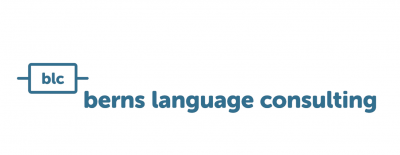Is end-to-end terminology management already ‘a thing’ in your company? Do you have a terminology database that authors and translators can easily access? And – do you sometimes ask yourself in the age of digitization if “human” work on concepts and terms is still that important? Won’t we soon be able to leave all of this to artificial intelligence anyway? What aspects of terminology work still play a role today? In this blog, we examine why terminology management is more important than ever.
Terminology work via deep learning?
The basis for a positive corporate identity is the creation of high-quality, homogeneous, and clearly worded corporate documents. It is essential that technical concepts are clearly defined and that homogeneous terms are used company-wide for this purpose. In the meantime, new approaches for creating definitions and identifying synonyms via deep learning and word vector models have been introduced. For this purpose, existing models are combined with corporate corpora to identify contexts of terms and derive metadata and definitions from these. We even go one step further with the application of synonym identification via word vector models: By calculating word vectors, it is determined which words occur in similar contexts and are thus potentially synonymous or have a similar meaning.
However, even if artificial intelligence is getting better and better, a professional terminological examination of the results is essential. Thorough terminology work involves not only a descriptive determination of previous terminology use but also prescriptive specifications. This includes the standardization of used synonyms, the definition of one homogeneous preferred term, and clear distinction to other terms, in order to prevent inconsistent terminology use in the future. At this point, terminologists and subject matter experts are indispensable.
In order to unify corporate terminology coordination processes with (human) team representatives, terminologists, and professionals are required. The processes are supported by terminology systems with term proposal management, term coordination workflows, and various roles and statuses.
In many cases today, terminology management is still limited to individual company departments. Extending term coordination processes to the entire company and improving tool support is the right step toward a brighter future.
Integration of terminology in concept maps
While the demands of company-wide coordination processes have (theoretically) existed for a long time, the integration of terminology into concept maps is a rather recent development.
What does that mean?
Knowledge networks are based on the idea of correlating terms and assigning structured information with these correlations. This allows information to be used automatically for example for semantic search queries, which then provides users with better and deeper results than conventional keyword searches could produce.
What can terminology add to this?
The base for creating concept maps as well as meaningful terminology are terms with meaning. In order to comprehensively understand a subject matter and to work on it in terms of terminology, it is essential to develop relationships between terms. Conceptual systems are suitable for illustrating these relationships in terminology systems.
 Image: Example of a concept system in QuickTerm
Image: Example of a concept system in QuickTermA logical next step for your company’s knowledge management is the availability of semantic searches in order to use the relationships represented in the concept system. For this purpose, the relationships between terms must be computer-readable. This is where ontologies come into play: In ontology language term information and relationships are formally represented and form the basis for semantic queries.
An example of using semantic search queries is a user, such as a sales employee, who is looking for specific information about a subject area. The sales employee might ask, “What bulbs are available for the front light?” In a semantic search based on ontology, the relationship paths between the terms enable information about possible causes and related actions. As a result, the employee receives appropriate items for the stated purpose.
Reuse in other business areas
Through ontologies, relationships between terms that have been carefully edited in the terminology database are made available in a computer-readable manner. This opens up new potential for further use of terminology in other business areas, in addition to editing and translation.
Semantic searches, which are based on ontologies, can be used for webshops in sales, chatbots in customer support, or the development of language assistance systems. It makes a lot of sense to join forces and use terminology as the basis for all business processes in your company related to language data.
Conclusion: Terminology is everywhere!
So is terminology becoming less important? Clearly not! Although the machine provides very efficient support in the “hard work” part, such as analysis of previous, it does not replace prescriptive terminology work with terminological and subject matter knowledge.
A good foundation laid out by prescriptive terminology plays an irreplaceable role as a basis for many business processes: This includes the creation of high-quality corporate documentation as well as the optimization of machine translation.
Ontologies that reuse language data from terminology offer a high potential. This is a great opportunity, as the reuse of terminology data for sales leads to cost savings for your company.
To learn more about building concept maps and knowledge networks using word vectors and how to finally make your terminology data really valuable get in touch!
Picture: “Curious Siri bug: Certain words trigger emergency calls in Germany” by Marco Verch. License: CC BY 2.0.






